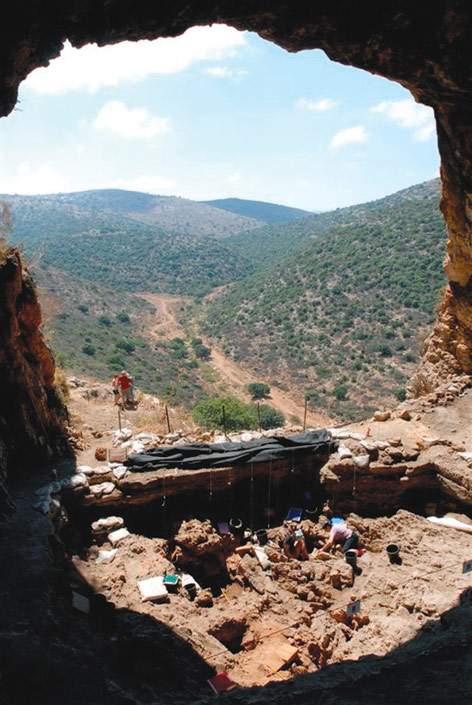Are you a journalist? Please sign up here for our press releases
Subscribe to our monthly newsletter:

Fifty tortoise shells, a human foot and the body parts of creatures that include a wild boar, an eagle and a leopard – all found in the 12,000-year-old grave of a petite elderly woman in the Hilazon Tachtit Cave – suggest that this ancient resident of Israel's western Galilee was one of the world's earliest shamans. She lived in a time of dramatic transitions; the Natufians, to whom she belonged, formed the first society known to have abandoned a nomadic lifestyle. Settling down entailed yet another major shift: from hunting and gathering to farming.
Such sweeping transitions create unprecedented social and spiritual needs, says team leader Dr. Leore Grosman of the Hebrew University of Jerusalem's Institute of Archaeology, who conducted the study with Dr. Natalie Munro of the University of Connecticut and Jerusalem colleague Dr. Anna Belfer-Cohen. Shamans serve as healers, messengers and magicians while mediating between the human and spiritual worlds. Though they have been common to cultures around the world, including many existing today, no burial site of theirs has ever before been found in the Mediterranean area.
Dr. Grosman is now a postdoctoral fellow in the lab of Prof. Uzy Smilansky of the Weizmann Institute's Physics of Complex Systems Department, who has developed a method for characterizing ancient artifacts based on their three-dimensional images. Grosman is applying this method to addressing various issues in prehistoric archaeology, such as sorting and classifying stone tools or determining whether a particular object had originated at the site of the excavation or had been brought there from a distance, for example, by river flow.
Prof. Uzy Smilansky's research is supported by the Minerva Center for Nonlinear Physics of Complex Systems. Prof. Smilansky is the incumbent of the Professor Wolfgang Gentner Professorial Chair of Nuclear Physics.